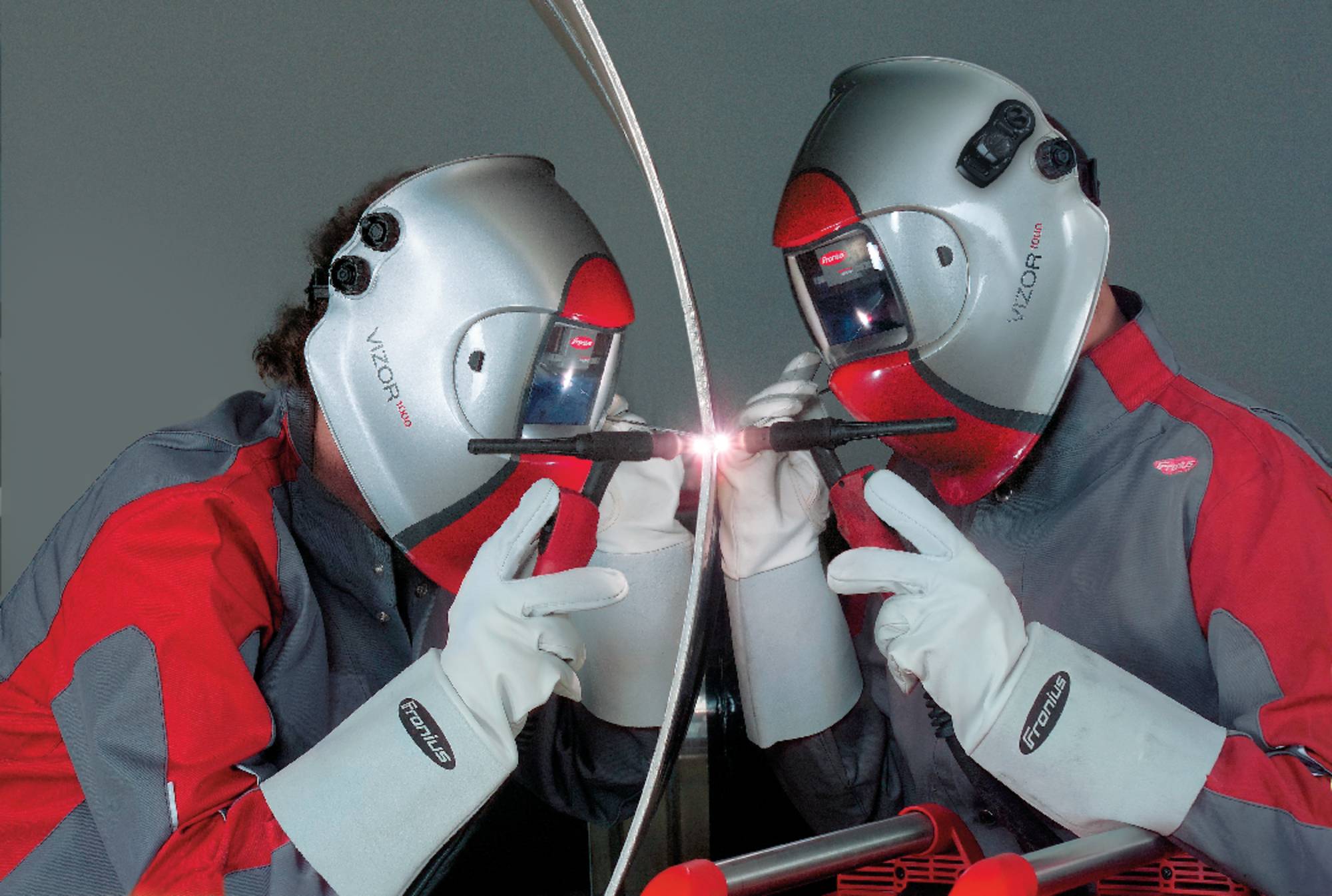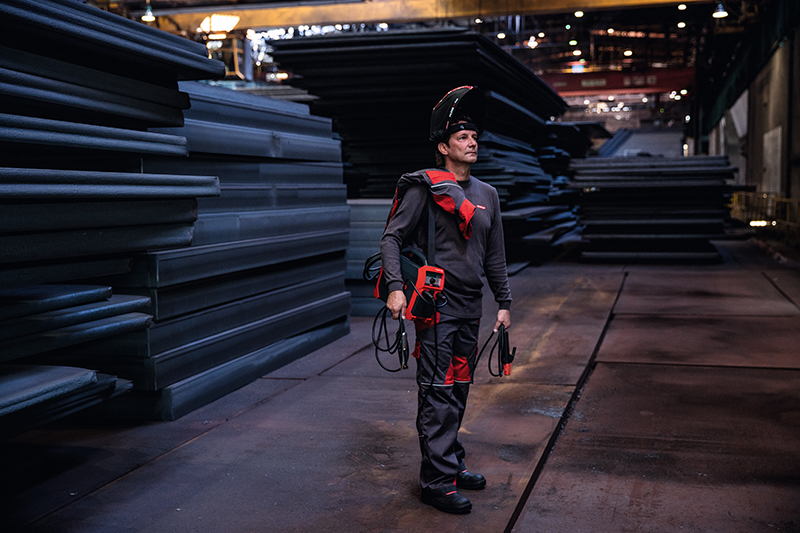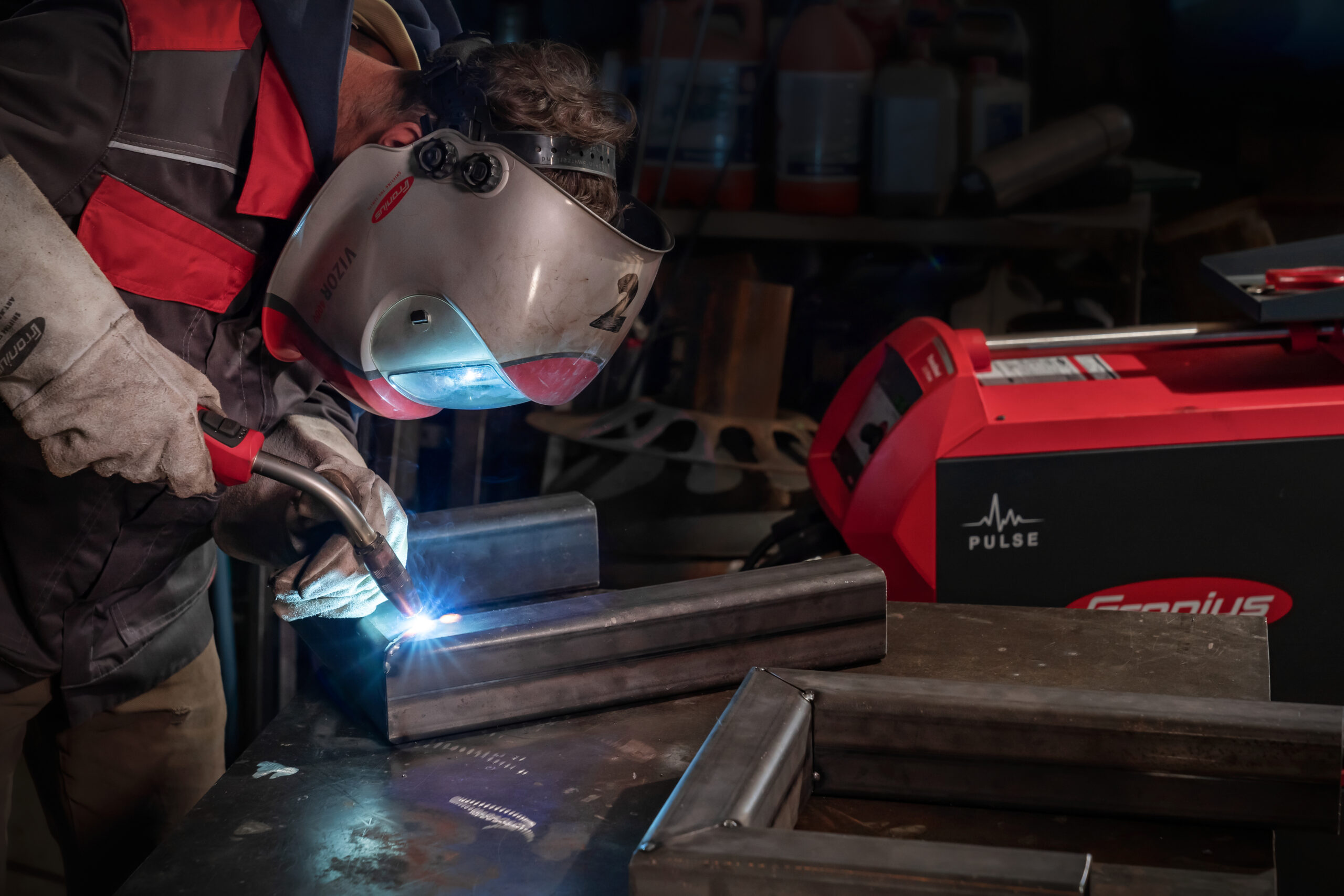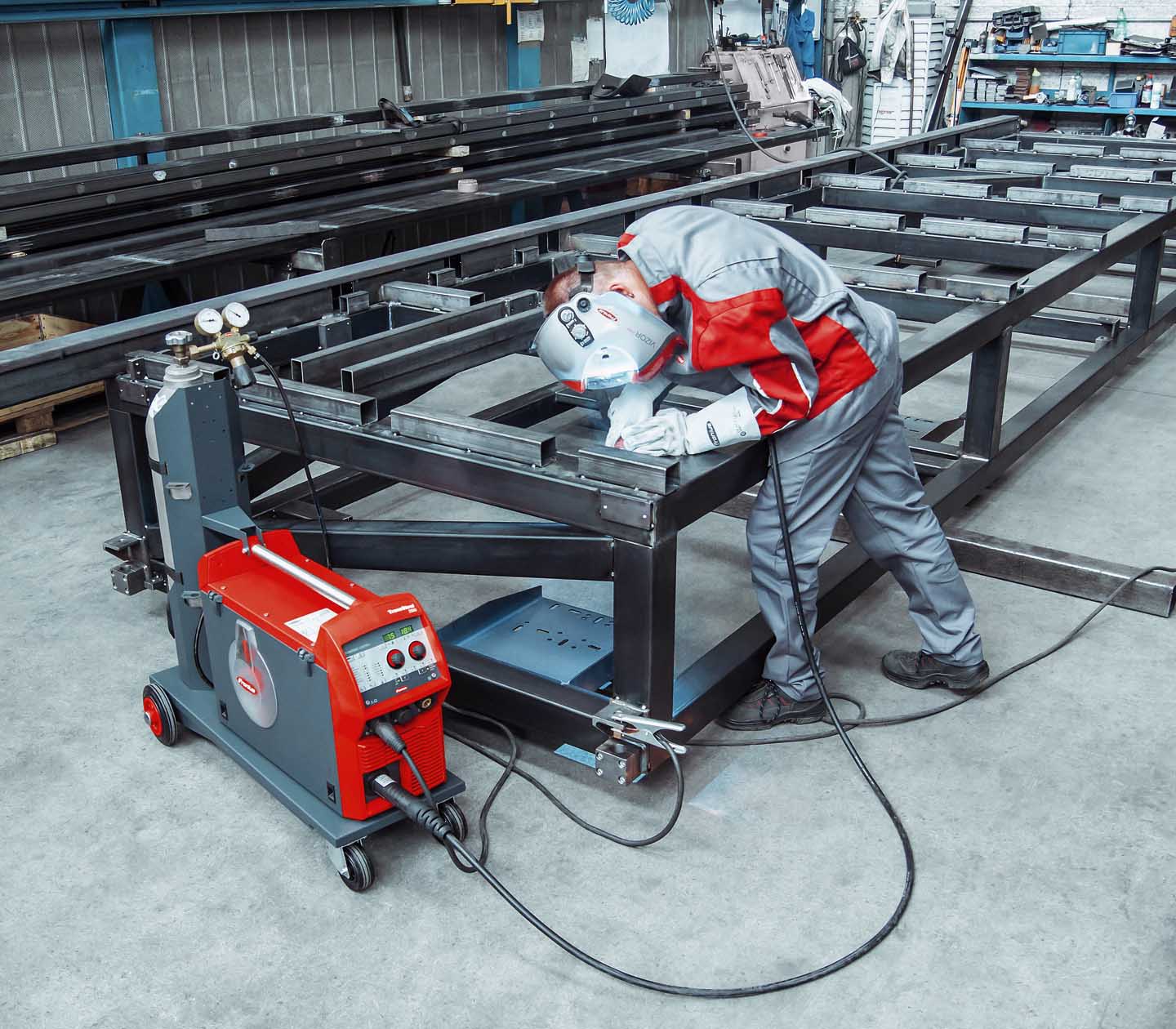While TIG Welding is certainly a demanding process, requiring a high level of manual dexterity, synchronized TIG welding is on another level entirely. It requires a perfectly coordinated team that not only performs the same movements but also works together in synergy. This means that any process fluctuations caused by a welder on one side must be immediately compensated for by their colleague on the opposite side, either independently or when prompted to do so. The welders communicate via radio or by pre-arranged knocking signals for actions such as “increase amperage.”
Synchronized welding without direct eye contact sounds complicated and requires a lot of experience; it does, however, have considerable benefits in container and pipeline construction as it “can make a tangible contribution to cost effectiveness and profitability,” according to Gerhard Haminger, IWT welding technician at Kremsmüller Industrieanlagenbau. For this reason, the plant constructor uses synchronized TIG welding whenever possible for welding vertical and cross seams when manufacturing large containers and pipelines from thick metal sheets with material thicknesses of four millimeters and above. This is advantageous due to the time savings made. The opposite side no longer needs to be ground and a wider root face can be left, thereby reducing the pre-processing work required for the weld edges.

Synchronized welding without direct eye contact requires a lot of experience; it does, however, have considerable benefits in container and pipeline construction.
Faster and More Economical
However, time is not the only decisive added-value factor of the synchronized welding process. “Where no grinding is carried out, there is also no longer any need for filling, so the amount of filler material required is also reduced,” explains Haminger. Furthermore, synchronized TIG welding also reduces the overall amount of shielding gas used as the gas used covers both sides at the same time. And the benefits don’t stop there: Since both welders almost subconsciously correct fluctuations in gap widths and root face thicknesses by way of mutual interaction, less work is required in terms of seam preparation.
Added Value through Digital Welding Power Source
Synchronized TIG Welding – it’s always sensible to have some technical support during the synchronized process
Although there are hardly any restrictions as regards the power sources that can be used, the handle for digital TIG welding power sources is of great assistance to the welding team. Here, with the Fronius MagicWave series for example, both arcs are reliably and automatically harmonized using the “Sync Mode.” For simultaneous TIG welding, even with alternating current, this ensures that the sources work in synchronization—no knocking signals required!
Want to find out more about the MagicWave series? Please visit our website for further Information.
Useful links:
 Perfect Welding Blog
Perfect Welding Blog




No Comments